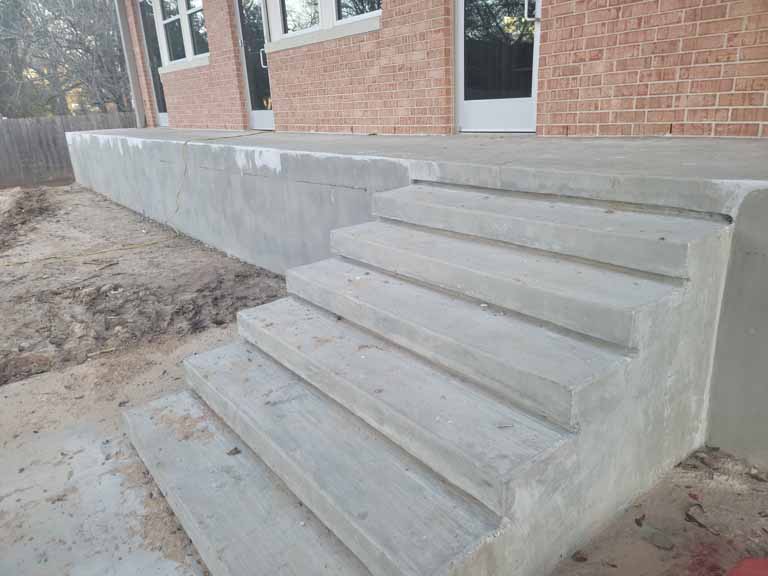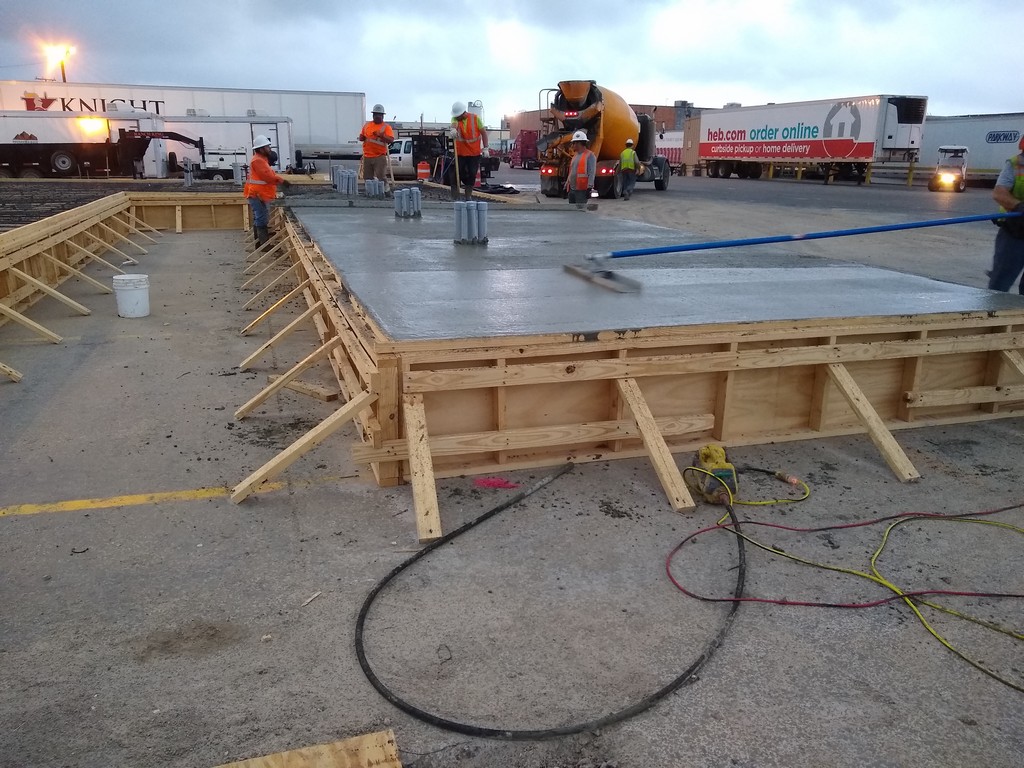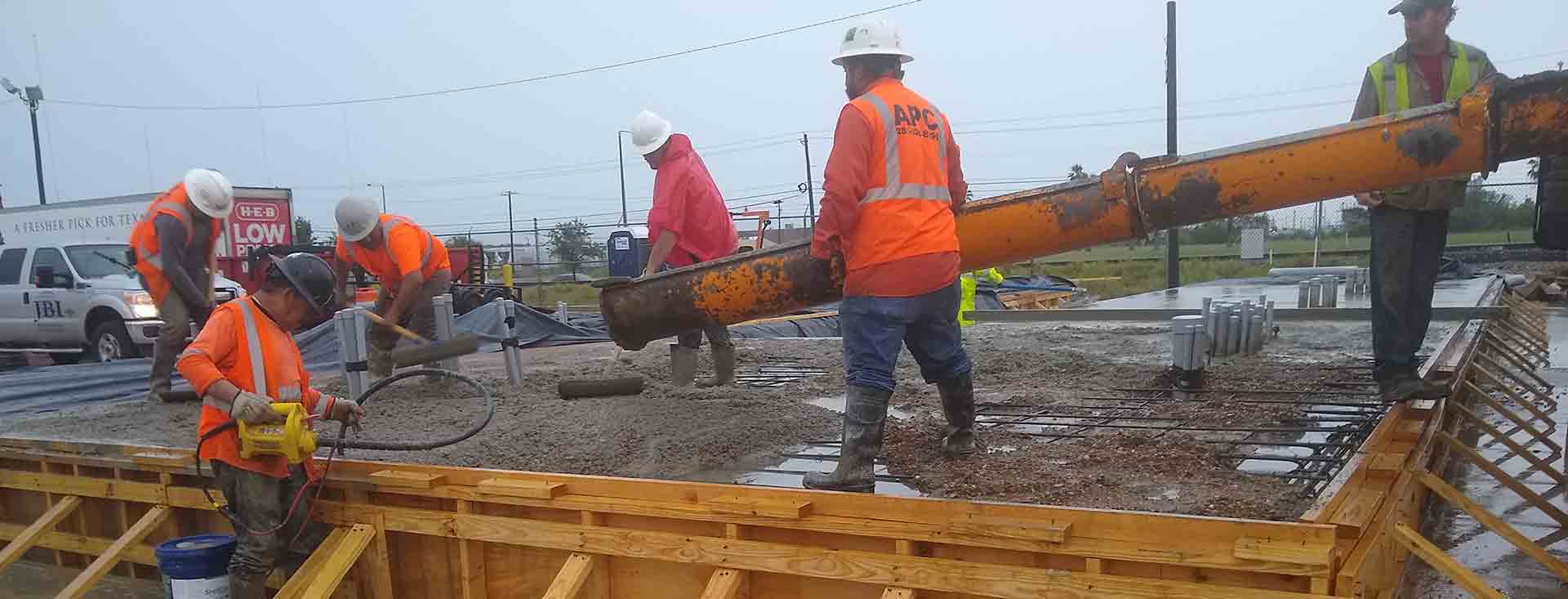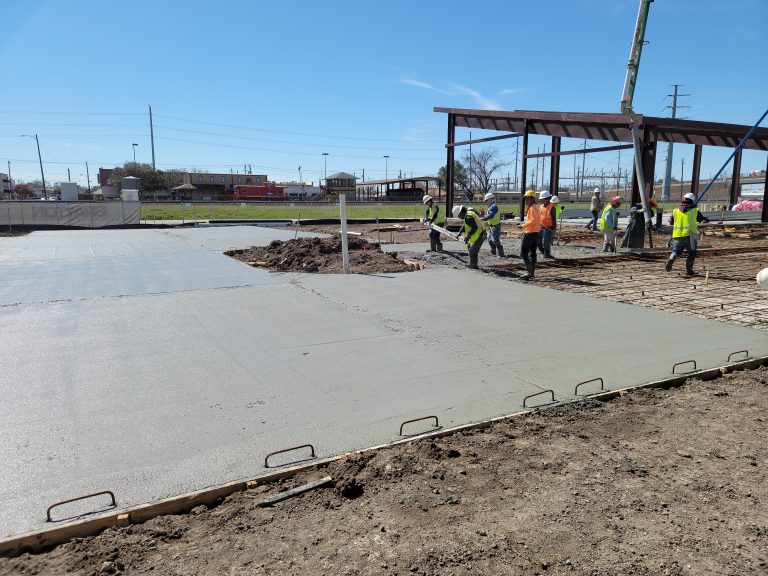Concrete Paving Contractor In Houston TX
Concrete Paving Looks Simple, But it Takes an Expert to Install
For many of us, concrete is such a standard part of the landscape that we rarely pay close attention to it. However, a lot of expertise and effort has been put into that sidewalk, curb or drainage ditch.
Concrete offers excellent versatility (along with superior durability), but with that versatility comes a challenge – can your concrete paving contractor make full use of it? Installing concrete pavement requires experience and a focus on detail, or it won’t be long before that concrete needs to be replaced.
American Paving can provide that experience and detail-oriented approach, ensuring your concrete pavement investment is well made.
What Types of Concrete Structures are Considered Concrete Paving?
Concrete comes in an array of shapes and sizes, but when professionals refer to concrete pavement, they’re typically talking about flatwork and curbs. In some cases, structural concrete may be considered concrete pavement, too, if it provides weight-bearing support for a building.
However, in the vast majority of cases, this is what concrete pavement may include:
- Parking lots
- Roads
- Curbs and drainage
- Sidewalks and walkways
- Patios
These concrete structures are everywhere and provide essential functionality to municipalities. As such, they should only be installed by a knowledgeable professional.
What Does the Installation Process for Concrete Paving Entail?
The pavement installation process is complicated and broken up into many smaller steps. Given the complexity involved, it’s a process best handled by a concrete construction professional. It’s also a process that begins long before any concrete is laid down. Here’s what a simplified version of that process looks like in practice:
- Define timelines and mark out the pavement – Before any labor is started, the pavement contractor should consult with the property owner to determine project timelines. This is when both sides get on the same page, so if there are any concerns this is when they’re voiced. For example, the pavement contractor may have issues with the soil quality and recommend soil treatment. That’s just one example, so it’s important to communicate early on.
Once the details are settled on, pavement contractors will mark the work area so teams know where to excavate and where to pour. Drainage considerations are also made at this point. - Remove any old, failed pavement – You may not have any old pavement to remove – skip to the next step if you don’t. In many cases, though, pavement contractors are hired to replace unsalvageable concrete.
Your pavement expert can demolish existing concrete and transport it off site for disposal or recycling. Once the area’s clear, work can begin on the new pavement. - Excavate dirt and build out the base – Excavation isn’t always necessary when laying down concrete, but if it is, the contractor will dig out any spots intended for pavement.
Once all dirt is removed, the pavement team will grade the underlying soil so it’s level and stable. At this point, the base layers can be placed. The subbase is usually a layer of gravel while the base is a mix of different-sized aggregates. If mixed and installed properly, the base layers will provide additional weight-bearing capacity, stability, and drainage. - Lay out forms for concrete pouring and water drainage – Once the base is down, it’s time to set up the concrete pouring and drainage forms. Essentially, these are like big molds that ensure the final concrete structure is built to shape. Forms also protect the concrete during pouring and curing, as well as ensure work safety.
Because forms must contain the concrete as it cures, they must be placed with precision. Otherwise, you’ll have concrete in places you didn’t intend. - Install a grid of concrete-reinforcing steel – Now that the forms are placed and pouring areas defined, the work crew can install steel rebar. These steel grids are designed to grip the pavement from the inside and protect it from tension-related stresses. In other words, the rebar keeps the concrete together even when environmental or weight-based stresses are present.
- Pour the concrete – Finally, the concrete can be poured. As you can see, a lot of work has already been done to get to this point. As the wet concrete is poured, the crew will use tools (rakes and shovels, mostly) to ensure all of the mix is utilized. During pouring, the pavement team will also ensure even pouring and prevent air from getting trapped.
- Smooth and level the concrete out – As soon as the concrete is poured, concrete contractors will “screed” the pavement’s surface. During screeding, a metal or wooden board is used to apply weight to the concrete. This compacts the wet mix, lets trapped air escape, and helps create a smooth finish.
Additional finishing techniques may be used to further texturize the concrete. One standard approach is to drag a stiff broom across the pavement. This creates the rough, grippy texture that concrete is prized for. - Ensure the concrete cures properly and clean up – It will be several days before the pavement is fully cured and ready to support weight. To facilitate this process, the concrete crew may add a chemical agent, including agents that capture water and prevent rapid evaporation, as this can leave the cured concrete brittle and possibly structurally unsound.
And, of course, a reputable Houston concrete contractor will clean up the work site and ensure all excess material is transported off site.




The American Paving Team Has Experience with Concrete Paving, in all of its Forms
American Paving has provided concrete pavement to a variety of commercial clients, and we can go from start to finish on a project. From the earliest planning stages to post-installation and curing, we have experience with it all. The American Paving team also provides general site preparation and pavement repair services in the Houston area, so we’re your one-stop, veteran-owned shop for all things concrete pavement.
